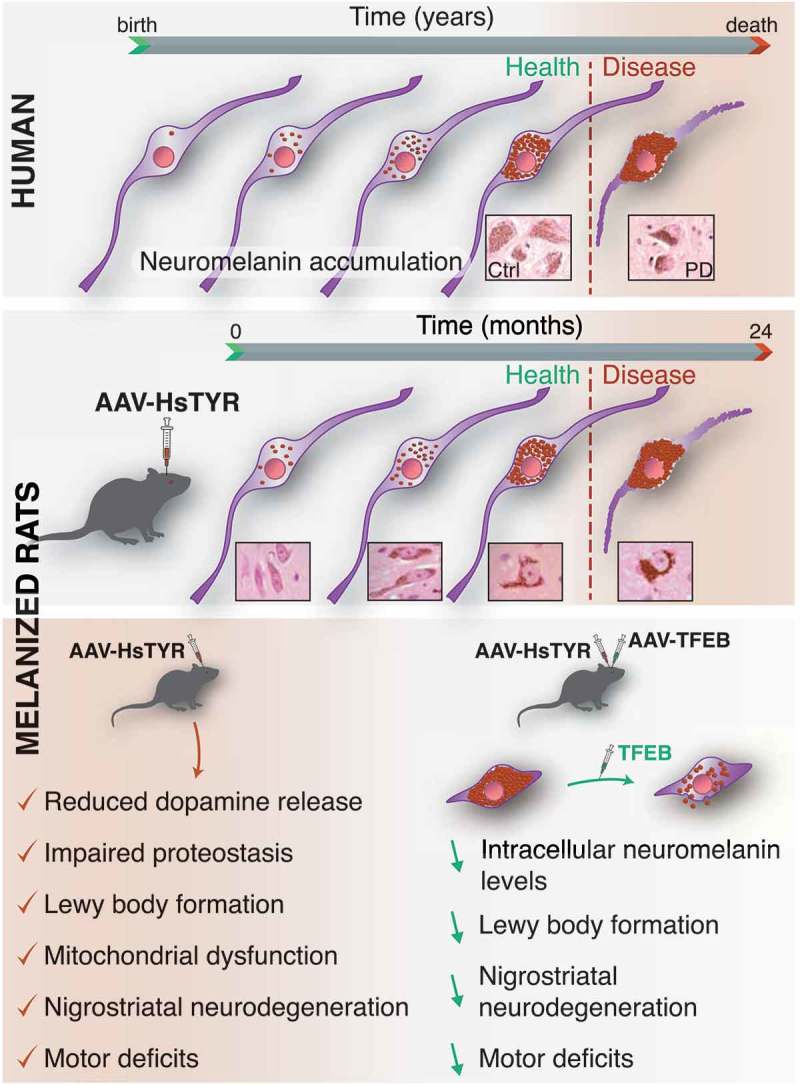Figure 1.

Proposed pathogenic effects of age-dependent intracellular neuromelanin accumulation in humans (top) and HsTYR-overexpressing rats (bottom). The continuous, age-dependent intracellular buildup of neuromelanin within undegraded autophagic compartments above a specific pathogenic threshold of accumulation (dotted red line) is associated with a general failure of cellular proteostasis concomitant with lysosomal/autophagy dysfunction, UPS impairment, Lewy body-type inclusion formation, reduced mitochondrial respiration, increased production of reactive oxygen species, impaired neurotransmission, nigrostriatal neurodegeneration and neuroinflammation, all of which are major pathological features of PD. Enhancement of lysosomal-mediated proteolysis with TFEB reduces intracellular neuromelanin to levels below the pathogenic threshold, attenuates PD-like inclusion formation, prevents nigrostriatal neurodegeneration and reverses motor impairment in HsTYR-overexpressing rodents. Part of TFEB’s effects are attributed to enhanced exocytosis of neuromelanin-filled lysosomes outside the cell, thus supporting the feasibility and therapeutic potential of modulating intracellular neuromelanin levels in vivo.
